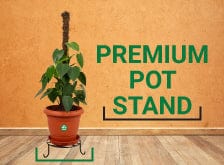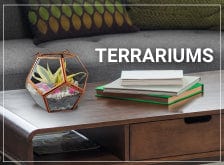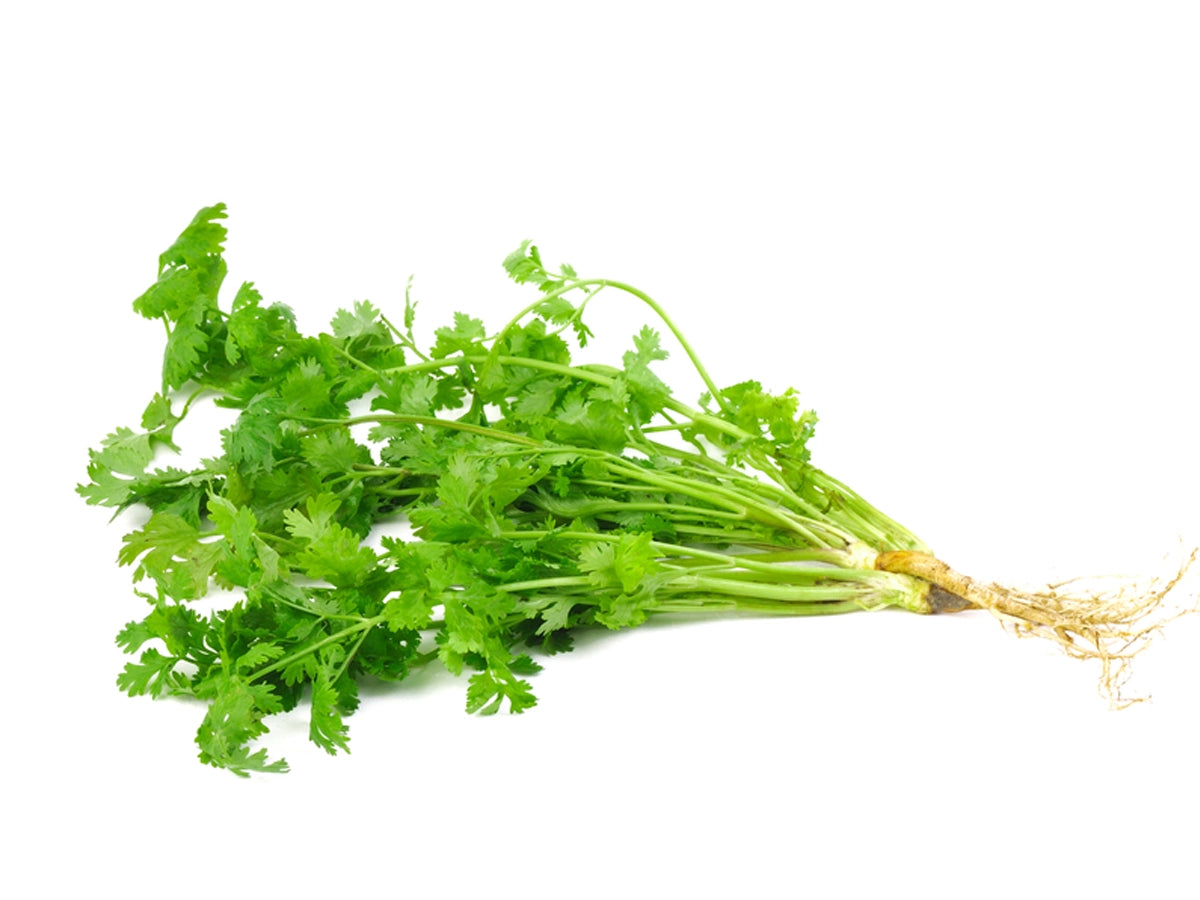How to Grow
How to Grow Dhania Coriander Leaves at Home: Benefits, Uses & Care Tips
If there were an award ceremony in the vegetable market, the People’s Choice Award for “the most indispensable culinary ingredient” would unquestionably go to coriander leaves or dhania.
It makes an unrivaled contribution to our Indian cuisine. From omelettes to pancakes, as a dip for all kinds of fritters, momos, or flatbreads, and to jazz up any bland vegetable or lentil, the use of dhania patti is everywhere.
Coriander, or dhania, proudly dominates Indian, Chinese, Thai, Mediterranean, Mexican, Caribbean, and many other cuisines across cultures.
What’s more?
Dhania is a rich source of potassium, magnesium, calcium, and many other nutrients.
We will discuss the following things about coriander in this blog:
- Interesting facts to know about coriander leaves
- How to grow dhaniya or coriander leaves at home
- How to take care of coriander plants
- Benefits of coriander leaves in daily life
Let’s dive into the world of coriander, then.
Interesting facts to know about coriander leaves
- Coriander is a famous herb belonging to the Apiaceae family of carrots, asafetida, anise, etc.
- Do you know that all parts of this herb, from the fresh leaves to the seeds, are edible?
- It is native to Southwest Asia, Northern Africa, and Southern America
- Coriander is a soft plant that grows to 50 cm (20 inches) in height.
- The coriander plant also bears flowers. These flowers are white or pale pink in color.
- One of the first spices that early settlers in North America produced was coriander, which was brought there around 1670
- The word coriander was derived from the Greek word koríandron which referred to a bed bug due to its bedbug kind of smell
How to grow dhania or coriander leaves at home
Growing this flavorful herb is quite easy. Many people in India grow it at home because it is a staple in almost all dishes. Any tasteless or boring dish can be perked up with a dash of chopped coriander leaves. So, learn how to grow dhania or coriander leaves at home easily.
Time to plant
The herb coriander dislikes extremely hot or cold temperatures. Therefore, if you live in a region with a temperate climate, late spring—between March and May—will be the optimum time to plant it. Coriander grows well in cooler months in tropical regions like India. This is why you'll find more coriander leaves in the market during the winter.
Method for planting coriander in garden
Prepare soil
If you want to grow it in your backyard garden, you have to select a spot that gets full exposure to the sun. In the afternoon, provide some shade as well. This plant requires a light, well-drained soil with good airflow. The pH of the soil should range from 6.2 to 6.8.
You may cultivate the soil a bit before planting. With a shovel or spade, just dig up two to three inches of garden soil. For the soil's top layer, use organic mulch, like compost, dried leaves, or manure. If you use manure, be sure it has been matured for at least three months; otherwise, the young plants will be burned.
Plant coriander seeds
- Coriander seeds are easily available in the spice market. Bring those seeds and plant them at a depth of around ¼th inch separated by at least 6 to 8 inches.
- You should space your coriander seed rows one foot apart. At this point, water them well since they require a lot of moisture to germinate.
- One inch of water per week is what coriander needs to grow, and you should expect to observe germination in around two to three weeks.
- Given how quickly coriander develops, you should plant fresh seeds every two to three weeks to guarantee a steady supply of coriander throughout the growing season.
- As you see the seedlings of coriander reach about 2 inches, you can use organic fertilizer or compost. The amount should not exceed 1-4th cup every week for 25 feet of total growing space.
- Carefully pull out the smaller plants and leave the stronger ones to grow. These smaller plants can be directly used for cooking after thorough washing.
Harvest
When the stems are 4-6 inches tall, harvest coriander by cutting off individual leaves and stems from the base of the plant. Remember not to chop off more than 1/3rd of the leaves, otherwise the plant will become weaker.
Method for planting coriander in pots
Choose a pot
First of all, choose a nice pot or container that is 18 inches wide and 8-10 inches deep. The width and depth of the pot are important because coriander doesn’t like to be moved, so you have to give it enough space from the beginning.
Plant seeds
Fill up the pot with soil with good-drainage. Mix some fertilizer in it and moisten it until it's damp. Now, spread seeds lightly and evenly, and then cover them up with 1/4th inch of soil.
Choose a favorable spot
Place the pot in a sunny area of your house for healthy growth. In a week or 10 days, seeds will start to germinate.
Water further
Use a spray bottle to sprinkle water on the plant. Don't use any normal-sized mug you use to water other plants because pouring with that intensity might displace the coriander seeds.
Harvest
The coriander stems can be plucked as soon as they reach a height of 4 to 6 inches. Just cut up to 2/3rd of the leaves every week if you want to keep harvesting from the same pot for a longer time.
How to take care of coriander plants
Coriander is one of the easiest plants to grow at home. It is an herb that is used frequently in food items on a daily basis. Therefore, it is a wise decision to plant coriander. Simply adhere to the care recommendations listed below to enjoy your delectable meals.
Water
Although coriander appreciates routine irrigation, the soil shouldn't be overly wet. You only need to dampen the soil to get started. Coriander can grow with just one inch of water every week.
Sunlight
Sunlight is good for coriander, but not for long periods of time. For its growth, an indirect source of bright sunlight is excellent.
Location
South or east-facing windows or locations would be the best location for coriander plant pots.
Temperature
The ideal temperature for coriander growth is between 17 and 27 degrees Celsius.
Fertilizer
For healthy coriander growth, use a liquid fertilizer or an organic fertilizer such as compost. It is sufficient to fertilize once a month.
Soil
Coriander requires soil with good drainage. The soil should be light and airy, and the pH should be between 6.2 and 6.8. So you can choose a soil that contains sand or perlite. Use a high-quality potting soil blend for your container gardening.
Pruning
To promote larger plants, pull back the young plants every so often by about one inch. Regularly cut soft stems from the coriander plant to extend the harvest.
Benefits of coriander leaves in daily life
As per NIN or National Institute of Nutrition, 100gms of coriander leaves has the following nutrients: -
|
Energy |
31 kcal |
|
Carbohydrates |
2gms |
|
Protein |
4gms |
|
Fat |
0.7gms |
|
Calcium |
146 mg |
|
Iron |
5.3mg |
|
Water |
86.99gms |
|
Fiber |
4.7gms |
|
Vitamin C |
24mg |
|
Vitamin A |
635mg |
The probable health benefits of coriander leaves are mentioned below: -
Boosts Immunity
Numerous antioxidants included in coriander protect cells from the harm that free radicals can do. Vitamin C is known for helping your body absorb iron. Dhania leaves contain a good amount of vitamin C alongside vitamins A and E, which are believed to strengthen the immune system.
For a healthy heart
Various lab tests on animals have proved that coriander leaves promote good heart health. They absorb extra sodium and water from your body, which helps reduce high blood pressure. Dhania may also help in managing the cholesterol levels. And if you keep your cholesterol and blood pressure under control, you may avoid developing heart disease. So, help your body to increase HDL, or good cholesterol, while lowering LDL, or bad cholesterol, with the addition of coriander leaves to your foods.
Help in lowering cholesterol
Given today's lifestyle and the easy availability of junk food, it is very easy to accumulate high levels of bad cholesterol. Amidst all that, you have to take care of your health because good health will allow you to enjoy all that you want from life. With regular consumption of coriander, your HDL, or good cholesterol, will increase, and you can stay healthier.
Helps improve liver
Coriander leaves are an excellent herb to use to enhance gut health since they contain fiber. Further research has shown that it may lessen undesirable digestive problems like bloating and discomfort frequently reported by individuals with IBS. Some people may find it to be an appetite stimulant.
Good for bones
Coriander leaves include calcium, phosphorus, manganese, and magnesium, all of which contribute to the health and strength of your bones. Coriander's anti-inflammatory functions may also help relieve the bones from arthritis-related pain.
For better skin
If you want great skin, you must consume foods rich in vitamin A, vitamin E, iron, and antioxidants. These help fight the free radicals that cause skin damage. Coriander leaves absorb excess oil and also have a cooling effect on the skin and body. The antimicrobial, antifungal, and antiseptic properties of coriander also cannot be neglected.
Good for brain health
Although human testing is still required, numerous studies on rats have shown that coriander extract is high in antioxidants and can protect against nerve cell damage. Some other studies on mice have found that corainder leaves may aid in enhanced memory and therefore be effective in treating Alzheimer's disease. Some also say that coriander leaves may help reduce anxiety.
Coriander leaves, whether healthy or not, play an essential role in our kitchens, don't they? It takes minimal care to grow, and thus you can grow them easily at home. With the help of the advice provided here, you may grow your own coriander plant and use it to make delicious dips or to garnish food. Additionally, add them to chilly beverages in the summer.
FAQs related to dhania or coriander
In which season does dhaniya grow?
Coriander, or dhaniya, grows best in cooler months. So, in India, they are sown during September and October and harvested all through the winter months.
Can we grow dhania in the summer?
Dhania is a plant that doesn’t like extremely hot or cold temperatures. So, in Indian summer, which is typically sultry in most places, dhania would bolt quickly and reduce foliage development. Sow coriander in cooler months, just after the summer and monsoon have passed.
What types of plant pests are common in dhania and how can they be avoided?
Aphids, root-knot nematodes, cutworms, and armyworms are some of the pests that commonly affect coriander plants. Powdery mildew, bacterial leaf spots, carrot motley dwarf, soft rot, and damping-off are some other common problems you may experience with this plant. To avoid such pests and diseases, you should avoid overhead watering or irrigation. Also, don’t touch the plant when it is moist.
Does the dhaniya plant require full sunlight?
A bright source of sunlight is preferred by dhaniya plants. But the scorching afternoon rays can be avoided. So, provide some shade if the heat is too much.
How much water does the dhania plant need?
One inch of water per week is sufficient for the growth of dhania plant.
What are coriander leaves primarily used for?
Coriander leaves, also popularly known as dhania, are primarily used in cooking in India and most Asian nations.



